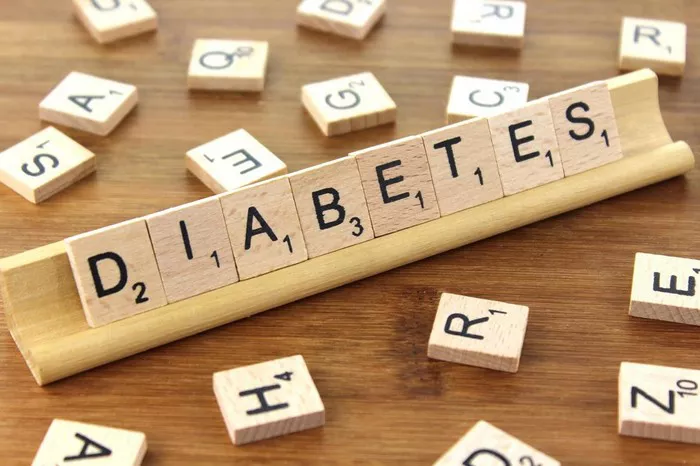Prediabetes is a critical health condition that acts as a precursor to diabetes, particularly type 2 diabetes. It represents a state where blood glucose levels are elevated but not high enough to be classified as diabetes. Understanding prediabetes, including its type and implications, is crucial for effective management and prevention of progression to type 2 diabetes. This article provides an in-depth look at prediabetes, including its classification, causes, risk factors, and management strategies.
What is Prediabetes?
1. Definition and Diagnosis
Prediabetes is characterized by elevated blood glucose levels that are higher than normal but not high enough to be diagnosed as type 2 diabetes. It serves as a warning sign that a person is at increased risk of developing type 2 diabetes and other related health issues. The diagnosis of prediabetes is typically made through one of the following tests:
Fasting Plasma Glucose (FPG): A fasting blood glucose level between 100 and 125 mg/dL (5.6 to 6.9 mmol/L) indicates prediabetes.
Oral Glucose Tolerance Test (OGTT): A 2-hour blood glucose level between 140 and 199 mg/dL (7.8 to 11.0 mmol/L) after consuming a glucose-rich beverage suggests prediabetes.
Hemoglobin A1c (HbA1c): An HbA1c level between 5.7% and 6.4% is indicative of prediabetes.
2. Types of Prediabetes
Prediabetes is not classified into different types like diabetes; rather, it is a state of glucose dysregulation that can lead to type 2 diabetes. However, understanding its relationship with diabetes types is important:
Type 1 Diabetes: This is an autoimmune condition where the body attacks insulin-producing cells in the pancreas. Prediabetes does not apply to type 1 diabetes as it is not a precursor but a separate condition.
Type 2 Diabetes: Prediabetes is a direct precursor to type 2 diabetes. It is characterized by insulin resistance and relative insulin deficiency. Prediabetes reflects the early stages of this condition.
Causes and Risk Factors
1. Insulin Resistance
Insulin resistance is a primary factor in the development of prediabetes. In this condition, the body’s cells do not respond effectively to insulin, leading to higher blood glucose levels. The pancreas initially compensates by producing more insulin, but over time, it may not be able to maintain normal glucose levels.
2. Genetics and Family History
A family history of type 2 diabetes increases the risk of developing prediabetes. Genetic predisposition plays a significant role in the likelihood of insulin resistance and subsequent development of prediabetes.
3. Lifestyle Factors
Obesity: Excess body fat, particularly around the abdomen, is strongly associated with insulin resistance.
Sedentary Lifestyle: Lack of physical activity contributes to weight gain and insulin resistance.
Poor Diet: Diets high in refined carbohydrates, sugars, and unhealthy fats can increase the risk of prediabetes.
4. Other Medical Conditions
Certain health conditions can contribute to the development of prediabetes:
Polycystic Ovary Syndrome (PCOS): Women with PCOS are at higher risk of insulin resistance.
Sleep Apnea: This condition can lead to metabolic disturbances and increased risk of prediabetes.
High Blood Pressure and High Cholesterol: These conditions are often associated with insulin resistance and prediabetes.
Symptoms and Complications
1. Symptoms of Prediabetes
Prediabetes often does not present noticeable symptoms. Many individuals may have elevated blood glucose levels without realizing it. However, some people may experience subtle symptoms such as:
Increased Thirst: Feeling unusually thirsty.
Frequent Urination: Increased need to urinate more frequently.
Fatigue: Feeling tired or fatigued more often.
2. Potential Complications
If left untreated, prediabetes can progress to type 2 diabetes and increase the risk of:
Cardiovascular Disease: Increased risk of heart disease and stroke.
Kidney Damage: Potential for chronic kidney disease.
Nerve Damage: Risk of peripheral neuropathy and other nerve-related issues.
Eye Problems: Increased risk of diabetic retinopathy and vision problems.
Diagnosis and Screening
1. Who Should Be Screened?
Screening for prediabetes is recommended for individuals who:
Are Overweight: Especially those with a BMI of 25 or higher.
Have a Family History: Those with a first-degree relative with type 2 diabetes.
Are Over 45 Years Old: Individuals in this age group are at higher risk.
Have a Sedentary Lifestyle: Those who do not engage in regular physical activity.
Have Other Risk Factors: Such as high blood pressure, high cholesterol, or PCOS.
2. Screening Tests
Routine screening involves blood tests to measure glucose levels or HbA1c. These tests help identify individuals who may be at risk for prediabetes and allow for early intervention.
Management and Prevention
1. Lifestyle Modifications
Healthy Eating: Adopt a balanced diet rich in fruits, vegetables, whole grains, lean proteins, and healthy fats. Reduce intake of refined sugars and processed foods.
Regular Physical Activity: Engage in at least 150 minutes of moderate-intensity exercise per week, such as brisk walking, swimming, or cycling.
Weight Management: Achieve and maintain a healthy weight through a combination of diet and exercise.
2. Medical Interventions
Medications: In some cases, medications such as metformin may be prescribed to help manage blood glucose levels and reduce the risk of progression to diabetes.
Regular Monitoring: Monitor blood glucose levels regularly to track progress and adjust management strategies as needed.
3. Behavioral and Psychological Support
Counseling: Behavioral therapy and counseling can help individuals make and sustain lifestyle changes.
Support Groups: Joining support groups for individuals with prediabetes can provide motivation and practical advice.
The Role of Healthcare Providers
1. Patient Education
Healthcare providers play a crucial role in educating patients about prediabetes, its risks, and management strategies. Providing clear information and practical advice helps patients understand their condition and take proactive steps.
2. Personalized Care Plans
Developing individualized care plans based on each patient’s unique needs, risk factors, and lifestyle is essential for effective management and prevention of progression to diabetes.
3. Regular Follow-Up
Regular follow-up appointments allow healthcare providers to monitor progress, adjust treatment plans, and address any concerns or challenges that patients may encounter.
Research and Future Directions
1. Ongoing Research
Research into prediabetes continues to explore new treatment options, preventive strategies, and insights into the underlying mechanisms of insulin resistance. Advances in technology, such as continuous glucose monitoring and personalized medicine, offer promising prospects for improving prediabetes management.
2. Innovative Approaches
Emerging approaches, including precision medicine and lifestyle interventions tailored to genetic profiles, have the potential to enhance the effectiveness of prediabetes management and prevention strategies.
See also: Can Hypoglycemia Be Prevented?
Conclusion
Prediabetes is a critical health condition that signals an increased risk of developing type 2 diabetes. Understanding its nature, causes, risk factors, and management strategies is essential for effective prevention and intervention. By adopting lifestyle modifications, engaging in regular monitoring, and working closely with healthcare providers, individuals can effectively manage prediabetes and reduce their risk of progression to type 2 diabetes. Continued research and advancements in the field offer hope for improved management and better outcomes for those affected by prediabetes.
Related topics:
What Causes Weight Loss in Type 1 Diabetes



























